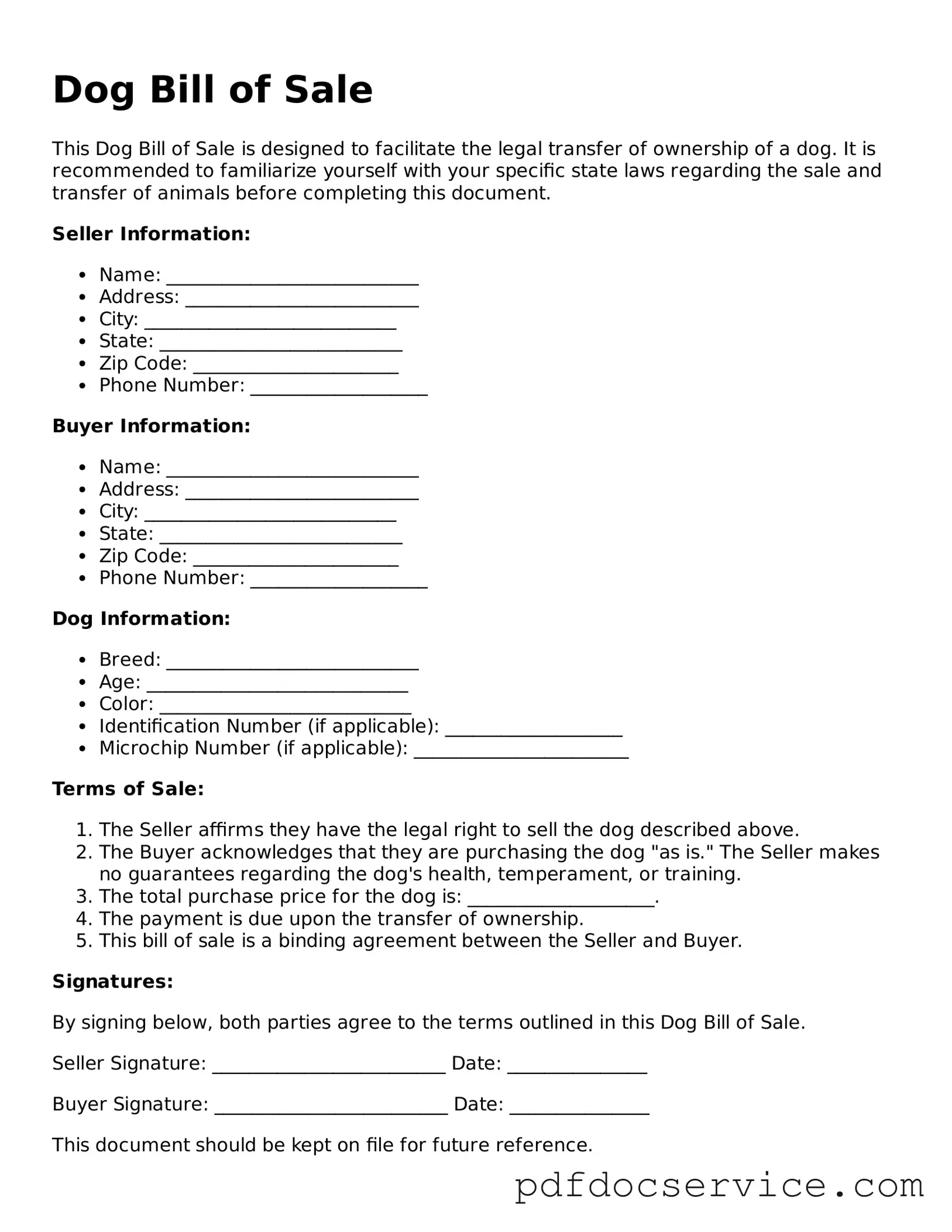What is a Dog Bill of Sale?
A Dog Bill of Sale is a legal document that serves as proof of the transfer of ownership of a dog from one party to another. It outlines essential details about the dog, including its breed, age, and any identifying information such as a microchip number. This document protects both the seller and the buyer by providing a record of the transaction.
Why is a Dog Bill of Sale important?
This document is important for several reasons:
-
It establishes legal ownership of the dog.
-
It can help resolve disputes regarding ownership in the future.
-
It provides a record of the dog's health and vaccination status, if included.
-
It can be required by local laws or regulations in some areas.
A comprehensive Dog Bill of Sale should include the following information:
-
The names and addresses of both the seller and the buyer.
-
The dog's breed, age, color, and any identifying features.
-
The dog's registration number, if applicable.
-
The sale price of the dog.
-
Any warranties or guarantees regarding the dog's health.
-
The date of the sale.
Is a Dog Bill of Sale required by law?
While a Dog Bill of Sale is not universally required by law, it is highly recommended. Some states may have specific regulations regarding pet sales, and having a Bill of Sale can help ensure compliance. Additionally, many breeders and shelters require this document to finalize the adoption or sale process.
Can a Dog Bill of Sale be used for other pets?
Yes, a Dog Bill of Sale can often be adapted for other types of pets. While the specifics may vary depending on the animal, the general structure of the document remains applicable. For instance, details about the pet's breed, age, and health should still be included.
How can I create a Dog Bill of Sale?
Creating a Dog Bill of Sale can be straightforward. You can find templates online or create your own. Ensure that you include all necessary information, and both parties should sign the document. It is advisable to keep a copy for your records after the sale is completed.
What if there are issues after the sale?
If issues arise after the sale, such as health problems or disputes over ownership, the Dog Bill of Sale can serve as a crucial piece of evidence. It can help clarify what was agreed upon during the transaction. Depending on the situation, it may also be beneficial to consult a legal professional for guidance.
